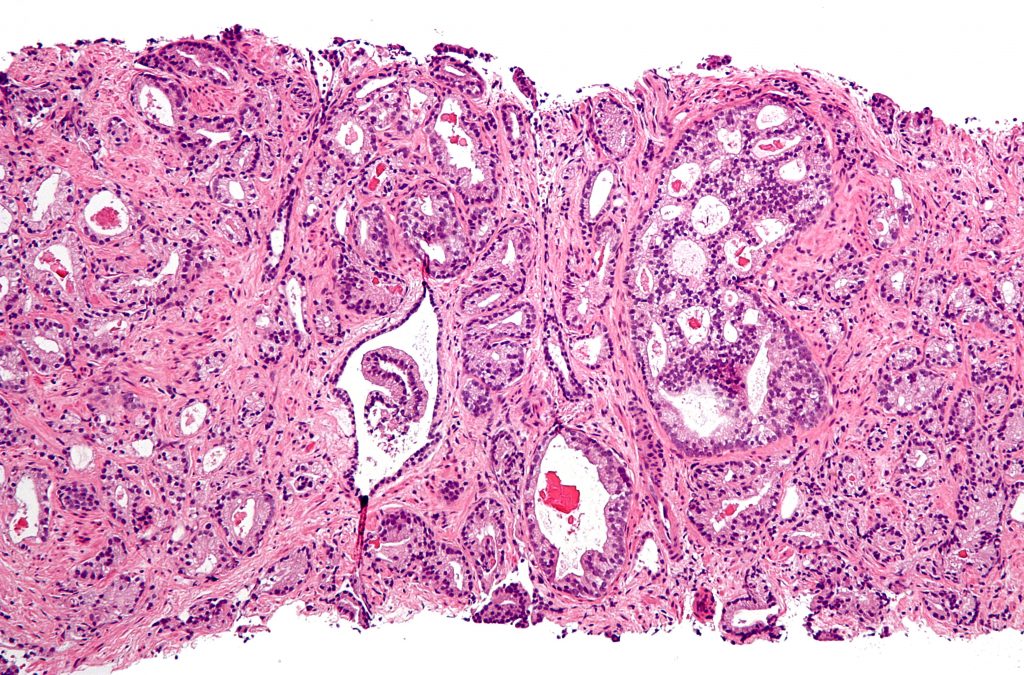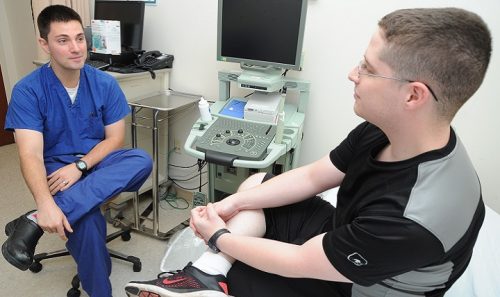Chances of getting treated are high if the discovery of these symptoms happened early on in life.
The Evidence
Currently, prostate cancer is third on the list for the most common kind of cancer with around 160,000 diagnoses every year; this is data is from the National Cancer Institute and is strictly a study done in the United States.
“If you are at high risk for prostate cancer, i.e. you are African-American or you have a close family member (brother, father) with prostate cancer, you should be screened at age 40 with the PSA and digital prostate exam,” writes Carolyn C. Ross, M.D., M.P.H.

But don’t let this evidence have you running to the hills because the good news is, it’s treatable. There are about 98% of diagnosed men who survive for five years or even more. However, the chances of getting saved from prostate cancer plummet when dealing with advanced cases of the disease. Once the malignant cells have spread to adjacent organs, the person’s survival rate of five years drops to 30%.
Why We Encourage Screening
To attain that five-year survival period or even be fully cured of the disease, doctors strong advise screening. Though there are a lot of disputes regarding the PSA screening recommendations, conclusions are published left and right to change examination procedures for illness.
“Overall, deaths rates from prostate cancer have decreased since screening was widely adopted in the early 1990s,” writes Shantanu Nundy, M.D.
Prostate cancer is scum; it is notoriously secretive in its symptoms, especially during its initial stages. For this reason, it is beneficial to get screened as early as 40 years old. Often, the indications of prostate cancer show up once the disease is already in its advanced stages; which is a challenging moment for both the patient and the healthcare provider.
The Manifestations
Often, screening is prompted by specific signs and symptoms that you alone can notice. To help you through, here are some of the manifestations that you have to watch-out-for which have high probabilities of telling you that you might want to get checked further.
Manifestation 1: Changes in the Urinary Patterns
Anatomically speaking, the prostate gland is situated just below the urethra and the bladder. Therefore, during urination, the bladder will push its load in the tubular opening of the prostate that allows urine to pass through and then down to the urethra.
As a person ages, the prostate increases in size due to factors like enlargement of the prostate or benign prostatic hyperplasia, which influence change in the patterns of urination. However, the presence of a tumor is considered one of the reasons for peeing problems. You can easily spot this through:
- A slow stream of urine flow
- Increase the frequency of urination
- Urgency
- Incomplete emptying of the bladder
These manifestations can all fall under the experience of wanting to pee a couple of minutes after you just did.
Manifestation 2: Blood in the Urine or Semen
The presence of blood during urination or ejaculation is not an ordinary phenomenon; in fact, it is a cause for concern and should prompt immediate consultation to a doctor because this may be indicative of prostate cancer. Or, these may just be because of the presence of inflammation or infections. Either way, you should immediately schedule to see your healthcare provider.
Manifestation 3: Stiffness and Pain
Usually, this happens the moment cancer has spread to the surrounding areas outside the prostate gland like the bones and tissues which means affectation of the spine and lower back. Numbness or pain is due to cancer pressing and distressing the spinal nerves; this can also cause muscle tightening. Cancer spread is determined by the scope or area of stiffness and pain.
When to Consult

Don’t freak out just yet. Just because you have experienced one of the three manifestations, doesn’t mean that you are already a candidate for prostate cancer; it’s not how it works. Bear in mind that there could be a myriad of reasons why you are experiencing these three potential signs. Consider them as your evaluation triggers which means that the moment one of these three symptoms emerge, it’s a sign to see your physician.
“When you self-diagnose, you are essentially assuming that you know the subtleties that diagnosis constitutes. This can be very dangerous, as people who assume that they can surmise what is going on with themselves may miss the nuances of diagnosis,” writes Srini Pillay, M.D.
